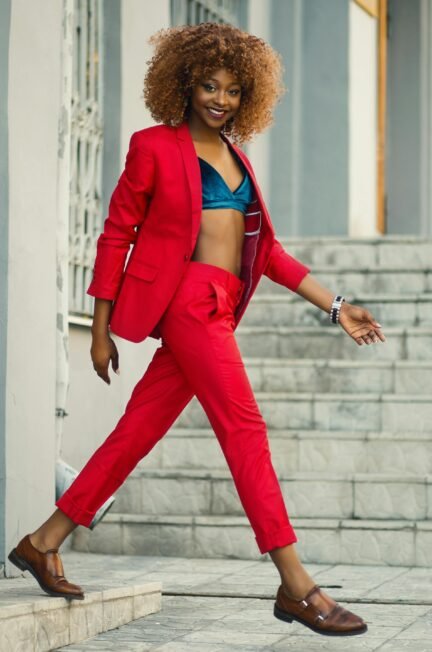Introduction
Streetwear is so powerful cultural moment that the way we think about clothing and personal style has been entirely reinvented. Derived from cities everywhere and with a based in subcultures like skateboarding, hip-hop, that is being reworked into a worldwide phenomenon, taking over traditional fashion genres. It combines comfort, monstrosity, individualism, and variability of the arts can be expressed on it which makes streetwear accepted by all. In describing the evolution, driving forces and cultural significance of streetwear fashion, this essay examines how its influence has impacted contemporary society.

The Origins of Streetwear
Streetwear started in the late 1900s, namely in cities like Los Angeles and New York. It was born out of a combination of several cultural influences, such as the skateboard culture and hip-hop music and graffiti art. From early pioneers like Shawn Stacy and the beginnings of Supreme, we were now welcoming brands that understood the culture, the lifestyle and of course the aesthetics of these young people.
These brands provided more than just clothing, they were a way of life and community. The countercultural nature of streetwear attracted people all along the spectrum of those who were looking for a way to stand outside the prevailing sartorial norms. Compton in the 1980s, and while skate culture was breaking ground and hip-hop crossing over into the mainstream, streetwear started to gather momentum as an object of desire for fashion fans and designers who had already been established…
Key Elements of Streetwear
Comfort and Casual Aesthetic
Comfort is key with streetwear. The style is characterized by loose-fitting silhouettes, relaxed cuts and breathable fabrics. Common staples include oversized t-shirts, hoodies and joggers that allow for ease of movement while offering an equal amount of comfort and individuality. It is this relaxed look and parallel comfort + style stimulant that rings true with especially the younger demographics.
Graphic Design and Logos
High graphics and branding are both staples of streetwear. Striking imagery, witty slogans, and unique type often used by numerous brands in order to create a clear message and define or enforce an identity on its wearers. More often than not, these designs reflect cultural references, social commentary or are just artistic expressions that help individuals relate the clothing to their own life.
Exclusivity Limited-edition releases with unique designs foster a need to act soon before it’s inaccessible. Items quickly go out of stock, not solely due to the fact that they are extremely limited- but because it is part of a culture referred to as “drop culture”. This further fuels the desire for streetwear by making it rarer, turning into a thriving resale market of collecting and stunting pieces.
Cultural Influences
Furthermore, with its heavy use of cultural input, streetwear can be a basket case of styles and ideas. Music is one of the key pillars of the genre, as hip-hop has heavily influenced streetwear styles. It has a similar effect when streetwear brands and musicians join forces, as the collective work often leads to legendary collections that go well with fans.
More importantly, streetwear grabs influences from across subcultures, including punk and elements of skate surf culture. With an amalgam of influences mixed together it makes for a widely attractive aesthetic. What results is an eternal state of becoming a trend that mirrors the zeitgeist of today.
Community and Connection
Streetwear, born from community It creates a common bond among those that love to create with fashion, share ideas and combine efforts. The rise of online platforms and social media have only helped to exacerbate this sense of community, with enthusiasts interacting not only with brands but also their fellow fanatics.
Through pop-up shops, sneaker conventions, and street style festivals fans are able to collaborate in their love of culture and identify the upcoming trends. At their core, these communal experiences are designed to foster connections between people, helping them feel part of a wider community in an increasingly individualistic world.
Where Streetwear and Technology Meet
What is certain, however, is that tech will continue to have an influence in the world of streetwear. E-commerce has completely reinvented the way we shop for fashion and, in doing so, given brands access to an international audience. From limited-edition drops on online platforms that allow aficionados to cop sought-after pieces without leaving home.
In an era of diminished reach and engagement, social media platforms have emerged as a weapon for both brands and influencers that is especially potent on Instagram and Tikor. Real-time platforms provide instant engagement opportunities that help brands display new collections or incubations, and also talk to their audience. Influencers shape the trends.
With the rise of digital fashion, and NFTs (non-fungible tokens), streetwear is now getting the creative spark that was much needed and longed for. Virtual collections and digital wearables are some of the ways designers are exploring to get people engaged in the virtual realm to express their style. The convergence of fashion and technology represents vast potential for for streetwear brands in the future.
Sustainability in Streetwear
Environment Consciousness As environmental issues increase, it is more likely that the fashion industry is coming under stress for adopting sustainable practices. And for their part, a growing number of streetwear labels are up to the challenge by designing with sustainable fabrics and using socially responsible production methods. The trend toward ethical sourcing mirrors a larger cultural shift towards responsible consumption.
This demographic is increasingly motivated to show their support for brands that use recycled materials, are transparent about sourcing and fair-wage labor practices. In addition to bolstering a brand’s image, sustainable practices also breed customer loyalty in those particular consumers who provide high premium value production.
The Future Streetwear
As a whole, the future of streetwear as an entire category seems strong and open for new momentum. Streetwear will continue to evolve as cultural influences change, this means that new thoughts and trends influence what we wear. This means that collaborations between household names and the new kids on the block are going to continue to be hallmarks of creative style.
Sustainability and ethos. The industry will continue to provide increasingly omniscient news about sustainability/ethical practices. And brands that do well here will probably do well longer term as consumers continue to turn toward products that match their values. Additionally.
Conclusion
Over the years, streetwear fashion has graduated from being a niche within a niche into a global movement that mirrors the diversity and creativity of present society. Hailing from skate and hip-hop culture, it has its roots deep-set in a diverse makeup that is beloved by all corners of the planet. Streetwear has long been woven into the fabric of who we are, its focus on comfort alongside bold and brash execution making waves throughout fashion.
Looking forward, the convergence of technology, sustainability and cultural expression will shape what streetwear means for the future. This developing genre will not only pervade in the fashion industry, but it would also evaporate into people that will allow them to be proud of who they are and how they choose to present their expression. Streetwear is ultimately more than just a style, it reminds us that culture is the most vibrate force of our world.



